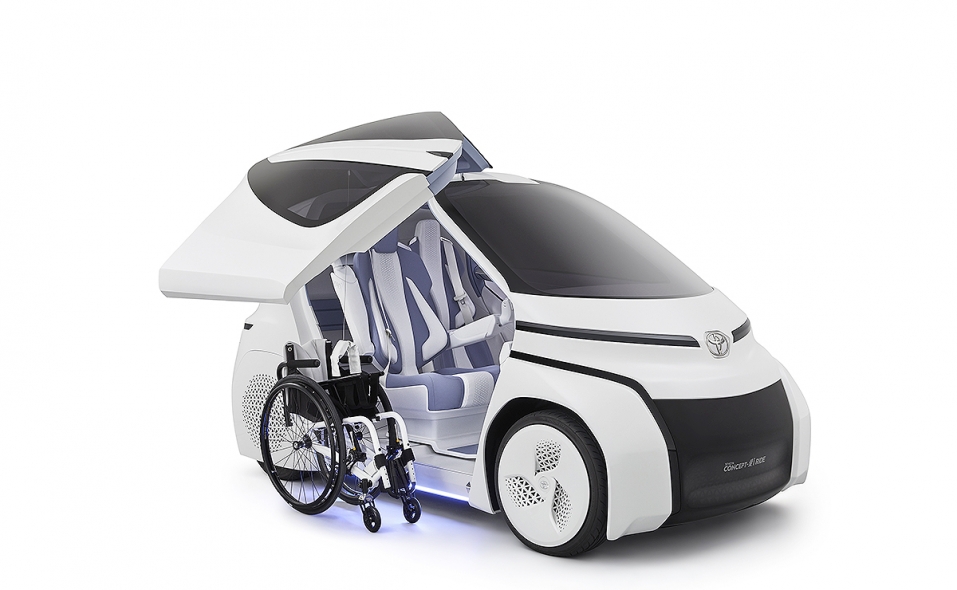Drivers Joystick Tech Mobility Detroit

Bringing 50 Innovative Mobility Startups to the North American International Auto Show. As tech and mobility are becoming more integrated. Headquartered in downtown Detroit, Techstars.
Mercedez-Benz reveals its F015 autonomous electric car to the media at The North American International Auto Show in Detroit, Michigan, on January 12, 2015. JEWEL SAMAD/AFP/Getty Images It's a cool, cloudy day high in the California desert, and an engineer hits 'pickup' on a watch-like device. An empty car pulls out of a parking space and stops beside me. The engineer and I hop in for a spin around Kia's test facility. The car stops for a jaywalker, at all stop signs and, when on the highway, goes around a slower car – all without the engineer touching the wheel or pedals.
To ride in this car is akin to hopping in a time machine and arriving in a driving scene straight out of Minority Report or I, Robot. It's that impressive. The self-driving car will likely change society more than any technology has over the past century.
Roads will be safer, we'll have more free time, cities will be reshaped and traffic may become a thing of the past. Ford CEO Mark Fields says this technology will have as big of an impact on the auto industry as the assembly line once did. One estimate suggests autonomous vehicles will be a $42-billion (U.S.) market by 2025. An autonomous vehicle uses cameras, radar, sensors and a GPS unit to sense its environment, the road and other objects so it can drive without human input.
Engineers must expose the car to millions of situations for the computer to understand what to do, essentially it is like showing a computer millions of flash cards. Inside Kia’s partially autonomous car Jordan Chittley/The Globe and Mail However, despite all the advances, it will be decades before anyone walks into a dealership and has a car drive him or her home. Almost every major auto maker and a number of tech companies are spending billions of dollars to develop self-driving cars.
Use what we do at work: at least 8 characters long. How to crack a teamspeak channel password game. Use at least one of each type of charater--uppercase letters, lowercase letters, numbers & special characters (those found above the numbers, using shift on most keyboards).
While many have shown how well the technology can work in ideal conditions, there is still years of work to figure out how to equip a car with the ability to drive itself through a snow storm, or at any time when lane markers are impossible to see. Fully autonomous cars (the kind without steering wheels) that can take you anywhere in any weather are not a reality of the near future. So we set out in search of answers.
Who is building these cars? How does the technology work? How will cities change? How will lives change? Most importantly, when will we be able to buy these cars? The journey begins more than a century ago, before the first car puttered down a dirt road.

After all, the car is not the first mode of transportation to transition from human operation to computer-controlled. In this seven-part multimedia series on autonomous vehicles, we examine the past, the current technology and what the future may hold. Elevator operator Anna Carroca begins to open the door to a 108-year-old manually controlled elevator at 10 Adelaide Street East in Toronto. Jordan Chittley/The Globe and Mail Anna Carroca casually strolls into action as a loud, piercing bell rings throughout the beige marble halls of a four-storey office town in downtown Toronto.
She walks into a green, cream-and-gold elevator cab, looks up at the panel for the requested floor, closes the cage door, grasps a black lever and pushes it to the left, and the elevator shoots toward the sky. Self-driving Cars Take a drive in a 108-year-old manually controlled elevator 2:02 Most elevators were manually operated before the Second World War. Today, this one, built in 1908 at the Ontario Heritage Centre at 10 Adelaide St. E., is one of a few remaining in Toronto.
Others are at the Goodenham (Flatiron) building, the Masonic Temple and the Gladstone Hotel. 'It's a very rare and vanishing type,' says Romas Bubelis, architect with the Ontario Heritage Trust. 'The visceral feeling you have as the air rushes by as you move up through the elevator shaft and being dependent on the elevator operator's hand is anything but a dead automatic experience.' The historic Birkbeck building at 10 Adelaide Street East in Toronto in the 1930s Ontario Heritage Trust In the middle of the 19th century, Elisha Otis invented a game-changing safety mechanism that prevented an elevator from falling even if its cable broke, says Rob Isabelle, CEO of KJA, an elevator-consulting firm. By the turn of the 20th century, electric, manually operated elevators were commonplace in New York and were being installed in Toronto buildings. 'Most buildings into the 1950s had people waiting there to take you,' says Lee Gray, professor of architectural history at the University of North Carolina at Charlotte, and author of a book about the history of elevators. 'Until we get to the 1950s there is a recognition the elevator needs a driver You couldn't get by without an operator because you or I couldn't drive the car.
Left Of Center 10. Blood Makes Noise 9. (I'll Never Be) Your Maggie May 11. In Liverpool 12. Retrospective the best of suzanne vega rar files.